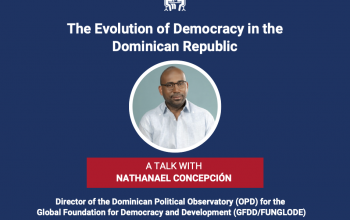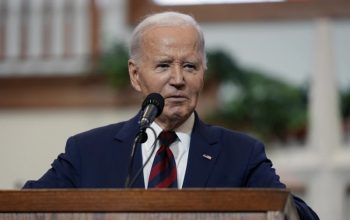news
“Joe Biden: A Change in Paradigm”, an article by Dr. Leonel Fernández
May 4, 2021
The following is the article published this past Monday, May 3, by our president Leonel Fernández in his “Listin Diario” column Global Observatory. On this occasion, he centers his analysis in the change of paradigm that President Joe Biden’s Administration will mean for the United States.
SANTO DOMINGO – Upon arriving at the White House President Joe Biden, quoting his own words, found a United States that was suffering from the worst pandemic in a century, the worst economic crisis since the Great Depression and the worst attack to its democracy since the Civil War. Following the tradition begun by Franklin Delano Roosevelt, of evaluating the results of the first 100 days of the new Administration, the current American president launched the most important rescue plan in the history of the United States.
He began by implementing a national vaccination strategy against the Covid-19 pandemic, which aimed to reach 100 million citizens in 100 days. He exceeded the goal by applying the dose to 220 million people, doubling the number that he had originally proposed. In the first quarter of this year, the economy grew seven percent. And, according to the IMF, it is projected that this year the economy will expand six percent, the highest in three decades. During his young Administration, President Biden has contributed to the creation of 1.3 million new jobs; approved the issuance of US$1.4 billion to 160 million people; granted loans to small and medium-size businesses; and assisted numerous families with the payment of their rents.
To generate greater equality and social justice, Biden has achieved the registration of 800,000 additional citizens to the health system. His Administration has also created a tax credit of three thousand dollars for each child in the family unit; raised the free public education system to the age of 16; and aims to increase the minimum wage from US$7.50 an hour to US$15 an hour.
Progressive Taxation
In addition to all of the above, the current U.S. government has an infrastructure plan for the installation of electrical systems, the construction of bridges, highways, ports, airports, railway corridors, and mass transit lines. The authorities have planned to carry out the greatest investment in research, development and innovation (outside the military), in order to promote artificial intelligence, the semiconductor industry, biotechnology and clean energy.
This effort is based on the fact that during the next 10 years the development of high technology will evolve at a faster rate than the one experienced during the past 50 years, and which the United States aspires to lead. By taking note of so many projects and initiatives, the question is, of course, how to fund that vast economic and development recovery program, which is estimated to cost some four trillion dollars. To tell the truth, there is only one way: by raising taxes through a tax reform program that will generate increased tax revenues for the State.
Under Biden’s scheme, this reform will be progressive in nature since it is not intended to tax the middle class or the labor market, but only the corporate sector.
In the United States, many companies evade paying taxes through tax havens. They benefit from tax loopholes, legal maneuvers, unjustified deductions and the transfer of profits abroad. Under Biden’s plan, one percent of the richest Americans will pay more taxes. That is, those who earn more than US$400,000 a year, and large corporations. The differences between Joe Biden and Donald Trump on tax matters are abysmal. In 2017, Trump reduced taxes on the grounds that it would contribute to economic growth and the spread of wealth in favor of the most disadvantaged. It did not. Instead, there was a deficit of two trillion dollars. And the tax savings, instead of being used to increase salaries, on the contrary, ended up in the pockets of the corporate leaders, who began to receive incomes that were 320 times more than the salary of their workers.
The Return of the State
In the Biden era, it is believed that it will be the State and not the market that will play the leading role in the strategy to overcome the current health, economic and social crisis. And, consequently, it will be at the forefront of the future transformation of the country. That, naturally, contrasts with what has happened in the United States during the last 40 years, since the Ronald Reagan Administration, when it was clearly established as conventional wisdom that “The government is not the solution to the problems: the government is the problem.”
This criterion ended a development model that was built on the role of the State, based on the Keynesian model, using the language of economists. It was a model that had been applied since Franklin Delano Roosevelt’s New Deal, and especially since the post-World War II era. However, that model entered into crisis and was exhausted during the 1970s. The model was impacted by the quadrupling of oil prices, the increase in public spending provoked by the escalation of the Vietnam War, the suspension of the convertibility of the U.S. dollar for gold, established by President Richard Nixon, and the inflationary spiral due to the accumulation of all these factors.
Based on this situation, a dominant criterion emerged: the Keynesian model had come to an end and that a new era was underway. The new model that would dominate would be the neoliberal concept, or the establishment of fundamental markets. Since all U.S. presidents before then, be they Democrats or Republics, from Roosevelt to Jimmy Carter, had been followers of the Keynesian model, the entire structure changed. Beginning with Ronald Reagan through Joe Biden, adopted the neoliberal model, with the exception of Bill Clinton and Barack Obama, who were centrists or followers of the Third Way movement.
The latter implied the application of a hybrid or mixed economic development policy based, at the same time, on the role of the State and the market, especially now with Joe Biden’s plan to get the United States out of its current crisis and place it once again in a leadership role in the world scenario, the U.S. Federal government once again occupies a central role in the recovery and renovation strategy of U.S. society.
Unlike Reagan, Biden considers that the State is not the problem but the solution. It is his belief that in his conception the State involves all North American citizens. By heading the State, rather than the marketplace, as the driving force behind the development strategy of the United States, Joe Biden reverses the neoliberal model and introduces a significant variation in the mechanism operations of the North American capitalist system.
It is such a significant variation that it could well be classified as a shift in the current paradigm.






